Your fridge is a mess—here's how to organize it
Everything you need to know about fridge organization.
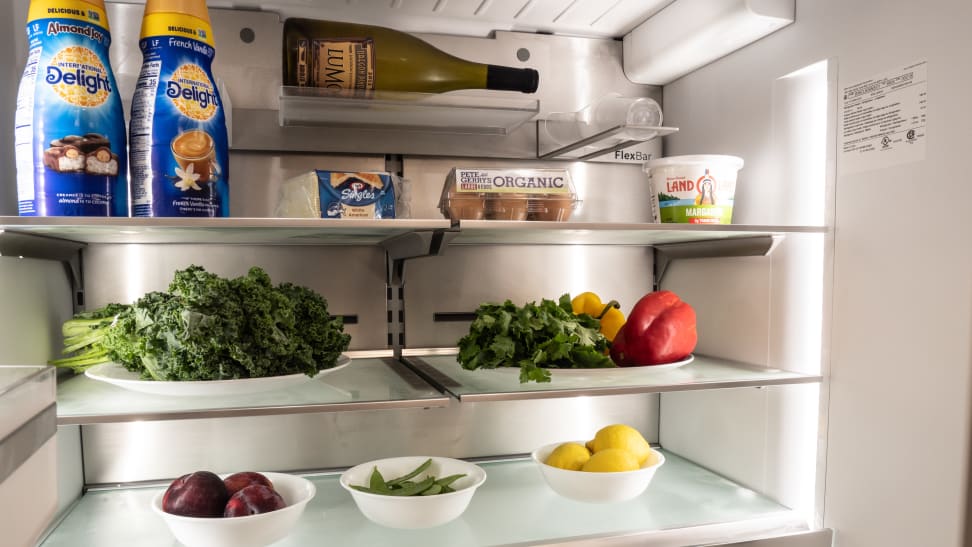 Credit:
Reviewed / Jonathan Chan
Credit:
Reviewed / Jonathan Chan
Recommendations are independently chosen by Reviewed's editors. Purchases made through the links below may earn us and our publishing partners a commission. Prices were accurate at the time this article was published but may change over time.
As we head into a summer of social distancing and home cooking, many of us are stuffing our refrigerators to the max. From chilling cold drinks to keeping produce fresh, our fridges are critical to helping us live well and stay relaxed at home.
Though consistent fridge temperature is important to keeping food safe, fridge organization also important. An overstuffed, messy fridge is a recipe for spoilage, food waste, and general disaster. Luckily, with some basic knowledge and the proper tools, keeping your fridge neat and well-organized doesn’t need to be overwhelming.
1. Empty your fridge for inventory and cleaning

It's recommended to deep clean your fridge once a month.
Once everything is out of your fridge, it's a lot easier to see what's worth keeping and what's just taking up space. Check labels to make sure nothing has expired yet. For raw foods, you can refer to this government-sponsored guide on shelf life. If you’re worried about perishable items sitting out while you clean, you can temporarily store them in a cooler.
Use sanitizing wipes to clean out any drips or residue on the shelves and walls. Take out the bottom drawers and soak them in soapy, hot water—and take advantage of their absence to clean the walls and floor where they slot in. Make sure the drawers are dry before placing them back in the fridge.
2. Choose what goes on the door—and what doesn't
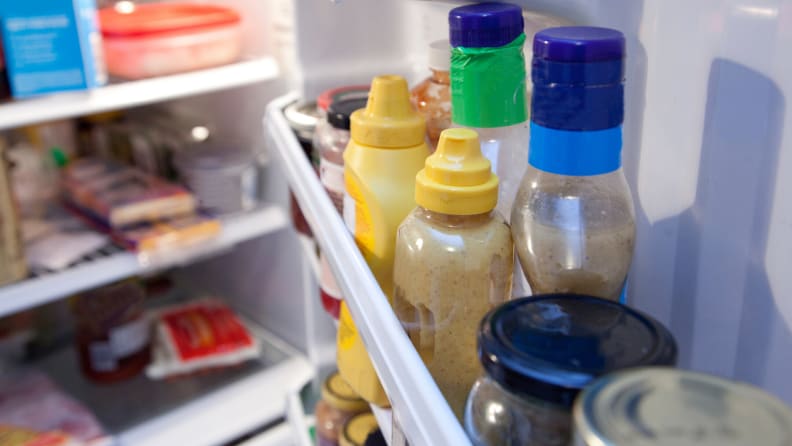
Most condiments are safe to be stored on the fridge door.
You might be tempted to put milk and eggs on the fridge door for easy access. Unfortunately, opening and closing the door cause fluctuations in temperature for anything stored there. We'd recommend storing milk, eggs, and other perishables in the back of the fridge, where temperatures are the coolest and most consistent.
Most condiments are high in salt and vinegar, so they wouldn’t be affected by slight changes in temperature—they’re good to stay on the fridge door. The same goes for jarred pickles, salsa, and pasteurized orange juice. Freshly-squeezed juices should be stored to the back of the fridge alongside the milk.
3. Store leftover food and ready-to-eat deli meats on the upper shelves
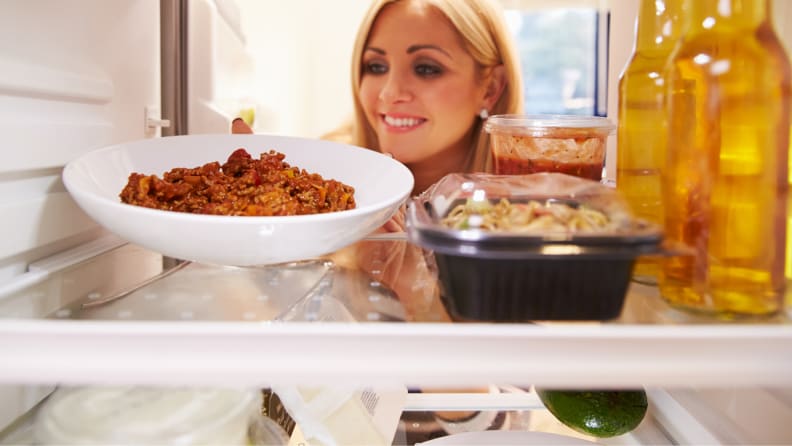
Putting leftover food on the upper shelves can remind you to eat them.
Because of cooked food's short lifespan, you’ll want easy access to these products. Placing them where they’re visible also helps you remember that they’re there and should be first on your “to eat” list, reducing food waste. Different brands, models, and types of refrigerators do behave differently from one another. If you want to be sure which shelf is the coldest in a specific fridge, we provide that information for every refrigerator we review. The manual for your machine may also provide helpful tips for the kind of storage that works best for that specific.
4. Make your groceries more accessible

We used the Sorbus Fridge Organizing set to create more storage zones in our fridge.
To efficiently utilize your middle shelves, you may want to use a lazy Susan turntable to help you access anything that’s hidden in the back corners of the fridge. The middle shelves are usually good for condiments, cheese, and other dairy products. Fridge baskets and bins are also useful tools to keep your groceries neat and orderly. We used this top-rated fridge organizing set in one of our crowded office fridges, and were thrilled with the results.
5. Try to place vegetables above meat and seafood to prevent cross-contamination
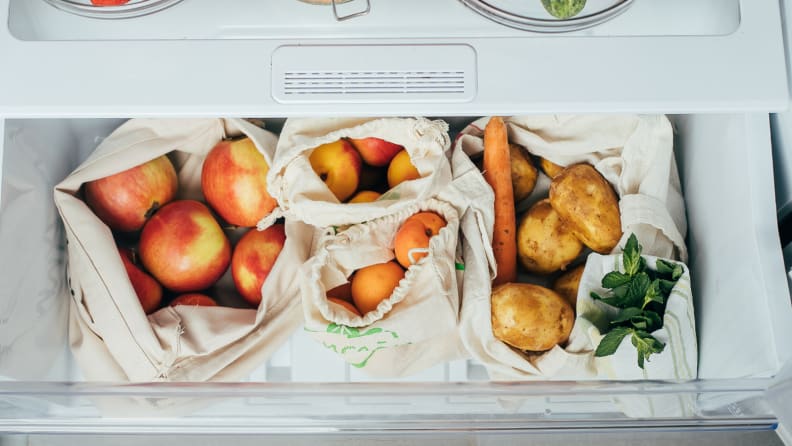
Separating vegetables and meat can prevent cross contamination.
Meat products and seafood tend to drip if not packaged properly. You can store vegetables and meat side by side in the bottom bins, or keep meat in a designated drawer away from the crisper. If you are short on bins, you can use the wide drawers from the organizer set to maximize the space.
6. Use fridge mats to absorb excess liquid
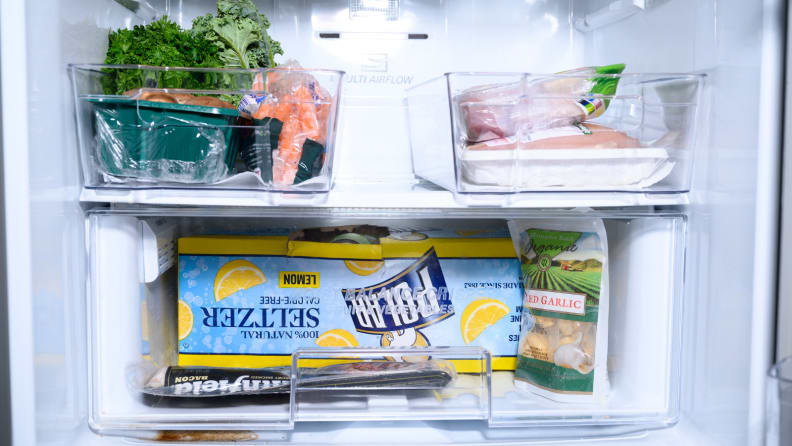
We lined the bottom of the fridge bins with kitchen towel—you can also use fridge mats.
Before you put produce in the bottom bins, line them with paper towels or washable fridge mats. This prevents drips from getting stuck on the shelves, which makes future cleaning easier. The cut-to-fit feature also helps you customize your fridge space. If you’re using pieces of paper towel, make sure to replace them every two weeks.
7. Use a clear soda dispenser for storing cans
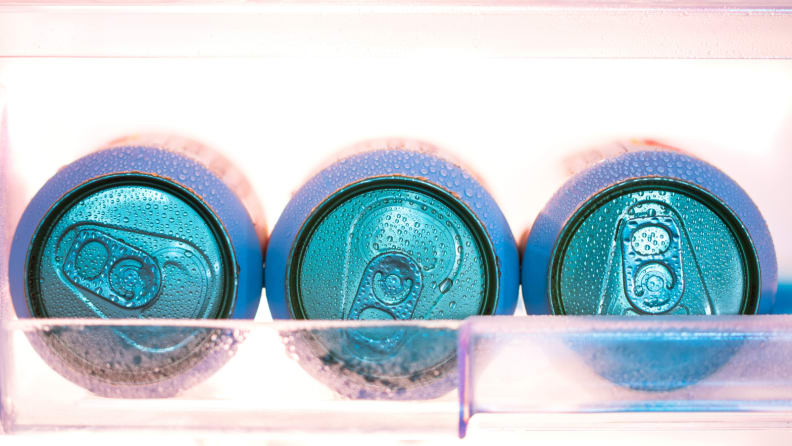
Soda storage bins can save space.
If you're big on beer, soda, and seltzer, having a way to keep your cans cold without taking up an entire shelf is essential. The Sorbus organizer set we tested includes one soda dispenser that holds up to 10 cans. You can also purchase a container individually to keep your cans organized and accessible.
8. Divide the space and label your food
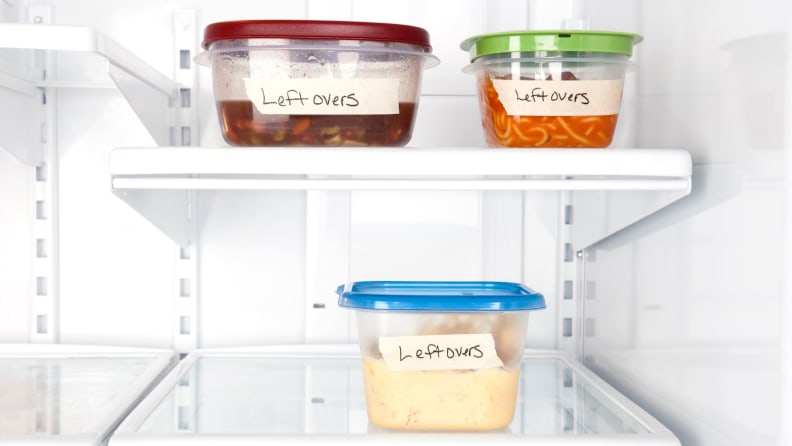
Labeling your food with expiration dates can help reduce food waste.
Categorize your fridge items in different sections so you won’t mix them up, especially in shared living spaces. Maintaining a habit of labeling your food with an expiration date can help you reduce food waste and promote healthy eating. You may want to try this Chalkboard labeling kit that turns chores into a fun-filled bonding activity that families (or roommates) can do together.
9. Keep your fridge odor-free
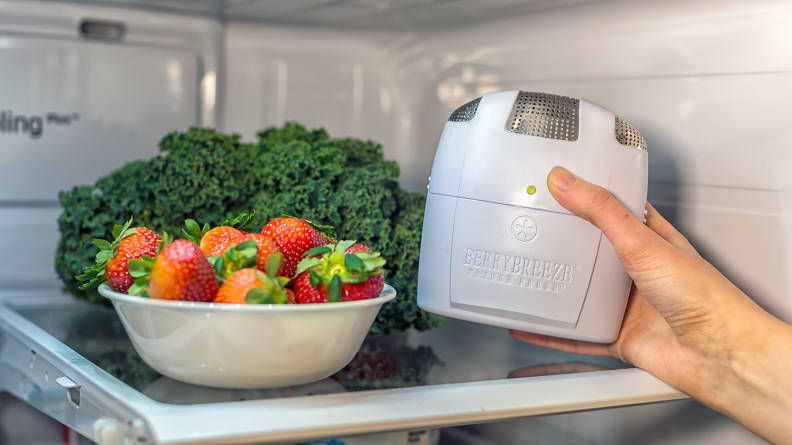
The FridgeFresh works wonders at preventing bacteria growth, mold, and odors.
A sour smell is usually the first indicator that something in your fridge has gone south of edible. To tackle this problem, our kitchen editor tested this mini ozone generator from FridgeFresh that helps slow food spoilage and reduce odors in your fridge.
A simpler alternative? Place an opened box of baking soda in the back of your fridge. Baking soda, a weak base which reacts with both acids and bases, absorbs the floating smelly particles that may otherwise land on your perfectly fresh food and lead to spoilage. Note that baking soda’s shelf life is about three months, so you do need to replace the box every once in a while. You can label the box with an approximate expiration date as a reminder. If the boxed version takes too much space, we also recommend this compact air filter version that allows you to place anywhere.
10. Once it's organized, leave it alone
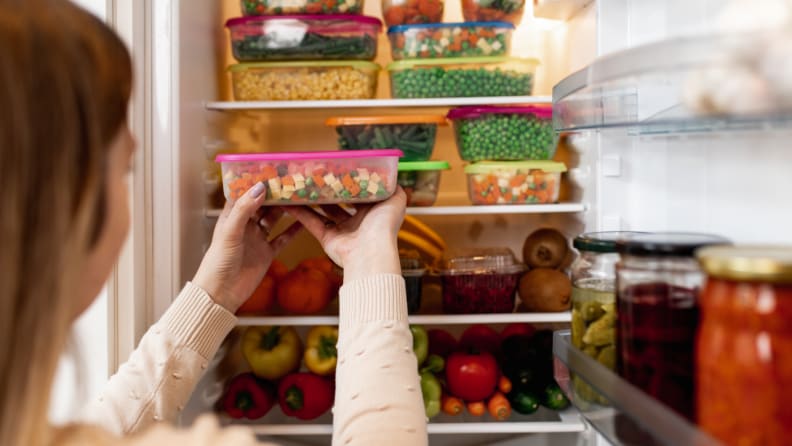
Avoid reorganizing your fridge too often.
Finally, it’s important to note that once your fridge is organized to your specifications, it should stay that way. Sure, we’ve all been guilty at some point or another of rearranging our refrigerator to fit a new item. But moving food from one part of the fridge to another exposes it to more temperature fluctuations, which decreases its quality while increasing the speed at which it spoils. If you’re smart about where you store your food, you can minimize this movement.
Buying a major appliance is a daunting task, and a fridge is no exception. Want to learn more about how to make the most out of your fridge purchase? Not only did we test the best refrigerators for every budget, but we also have tips and tricks to help you reduce utility costs.





